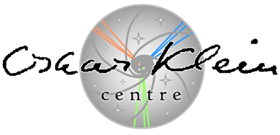Speaker
Juan Antonio Aguilar Sánchez
(UW-Madison)
Description
The IceCube Neutrino Observatory is a kilometer-scale detector located in the South
Pole. The full detector comprises 5,160 photomultipliers (PMTs) deployed along 86
strings from 1.5-2.5 km deep in the ice. The detector construction finished during
the Austral summer of 2010-11. In addition, a dense sub-array of 6 strings in the
center of the detector together with 7 surrounding IceCube strings form DeepCore,
which increases sensitivity to low energy neutrinos (< 100 GeV). Muon tracks
arriving in the detector from neutrino interactions are reconstructed using the time
and charge information detected by the array of PMTs. One of the main scientific
goals of the IceCube experiment is the detection of astrophysical neutrinos that will
help to understand and settle the unresolved questions about the origin and nature
of cosmic rays. In this contribution we present the results of time-integrated and
time-dependent searches for astrophysical neutrino sources performed over the
whole sky using data collected between April 2008 and May 2010 with the 40-string
and 59-string configurations of the IceCube Neutrino Observatory. An unbinned
maximum likelihood ratio method is used to search for astrophysical signals, and for
the first time adapted to combine data from multiple different detector
configurations. The combined integrated sensitivity of the search is about a factor
~2.5 better than the previous 1 year limit of the 40-string configuration alone.
Apart from the all sky survey we perform a dedicated search based on a catalog of
sources, as well as a search based on flares of AGNs observed by other experiments,
using lightcurve information from bands where comprehensive coverage is available.
Stacking searches for selected source catalogs including extended sources are also
presented.
Primary author
Juan Antonio Aguilar Sánchez
(UW-Madison)

